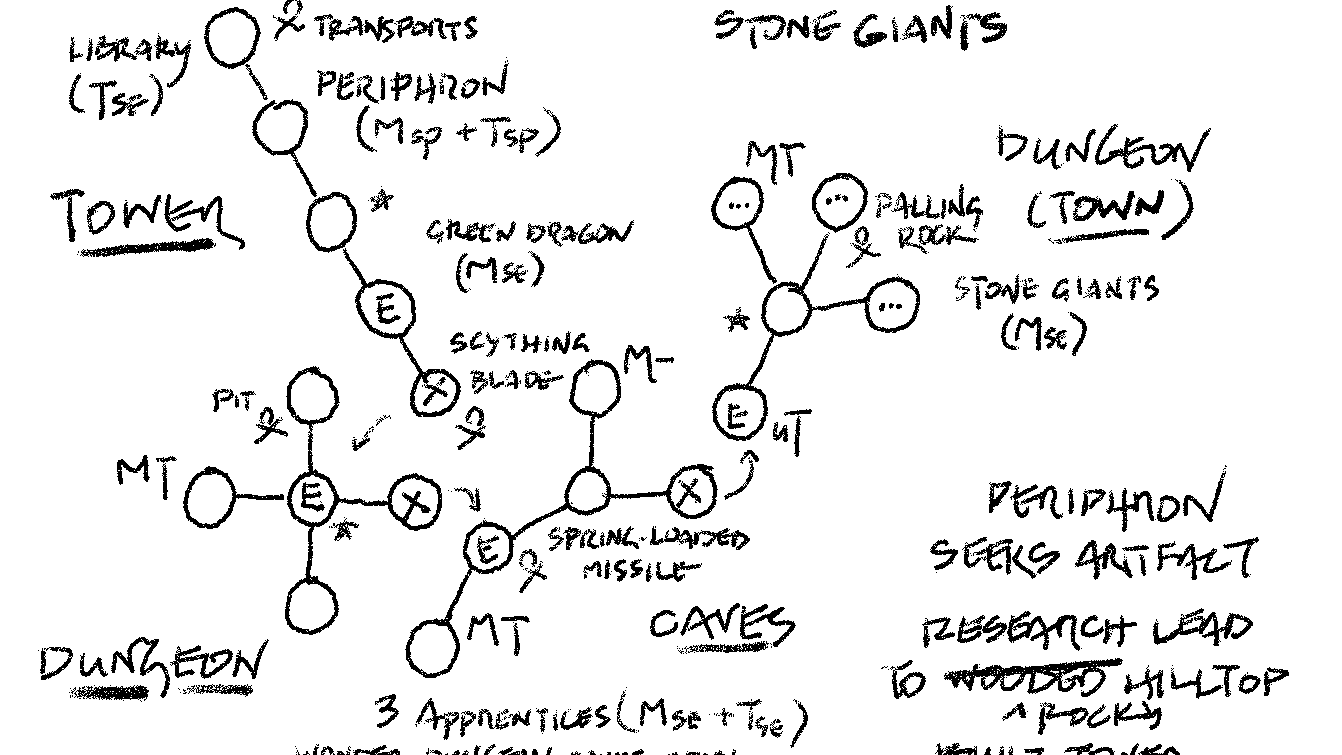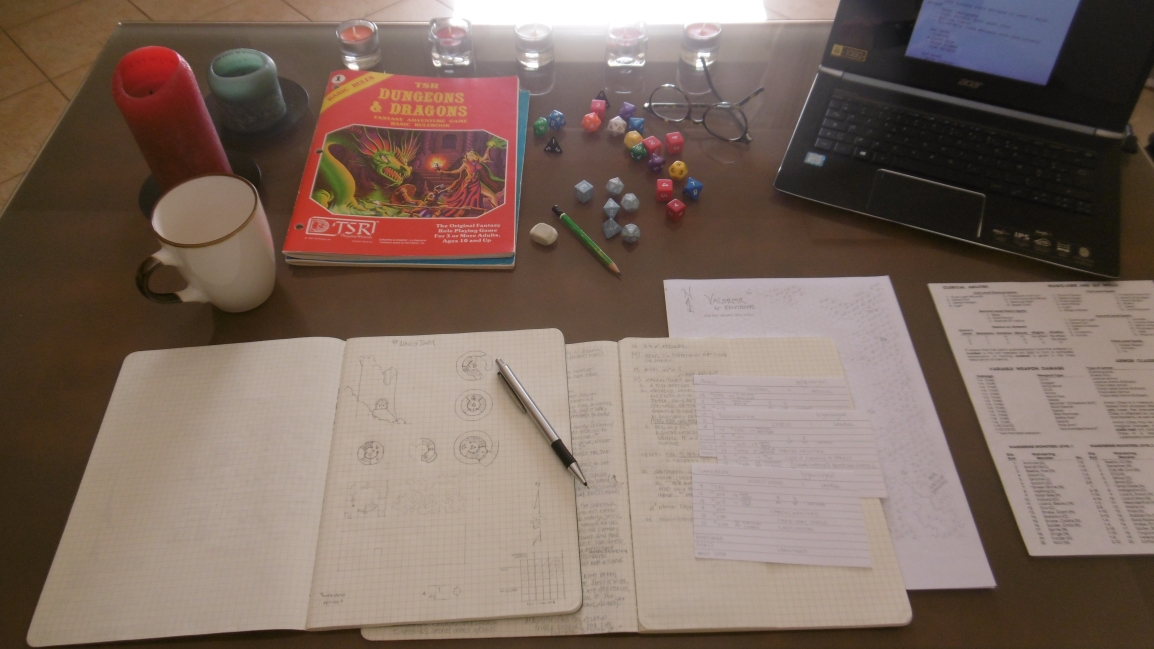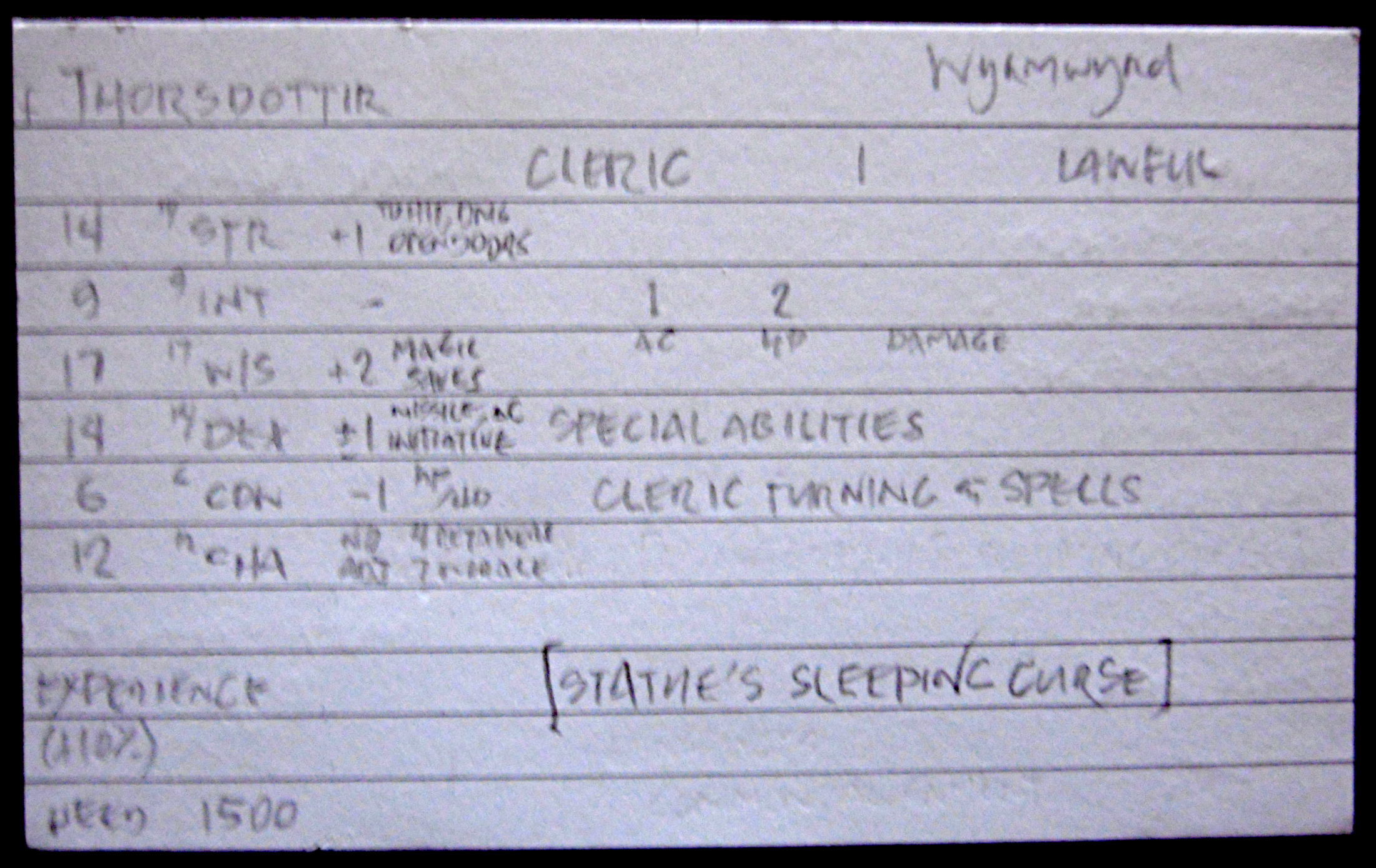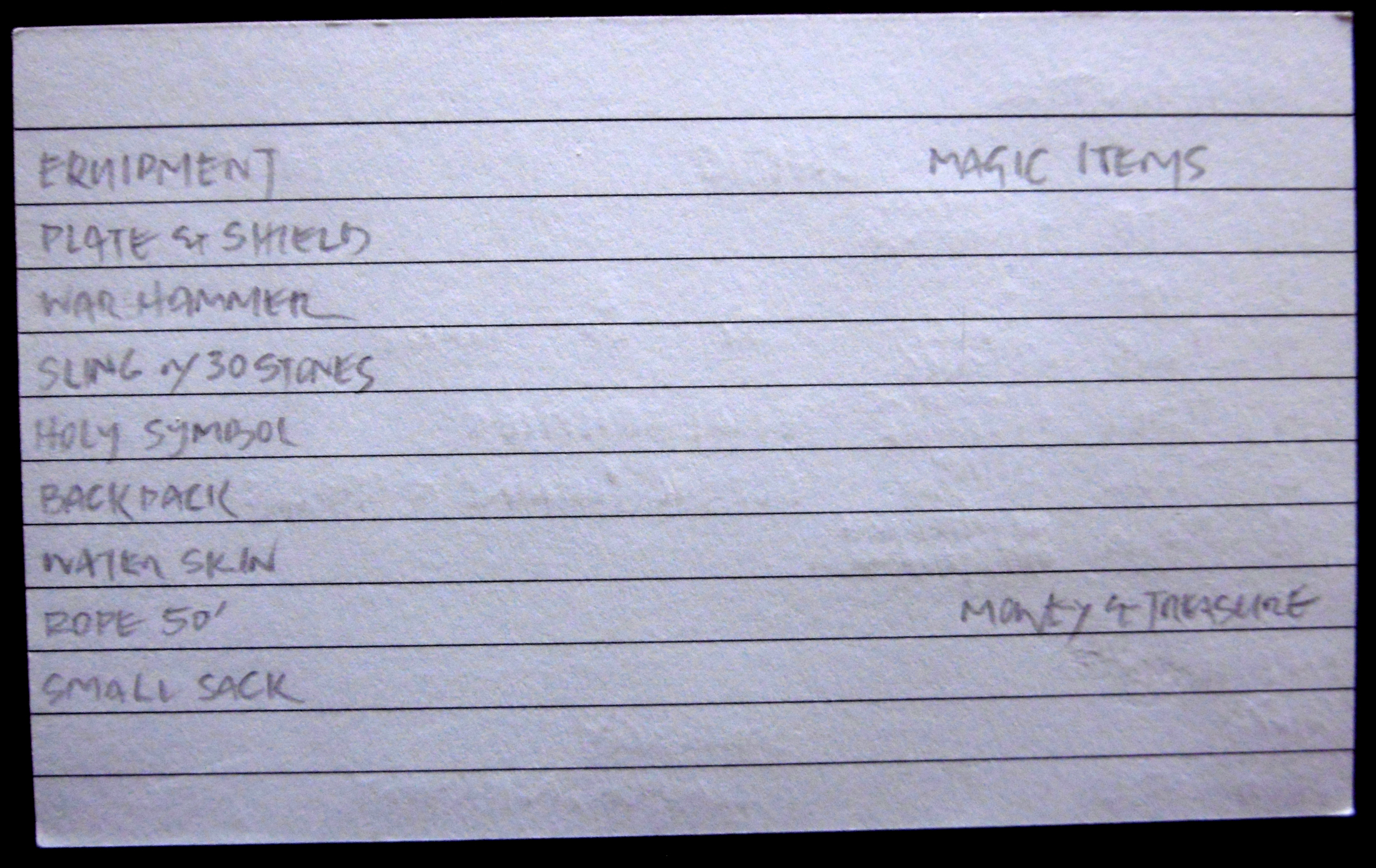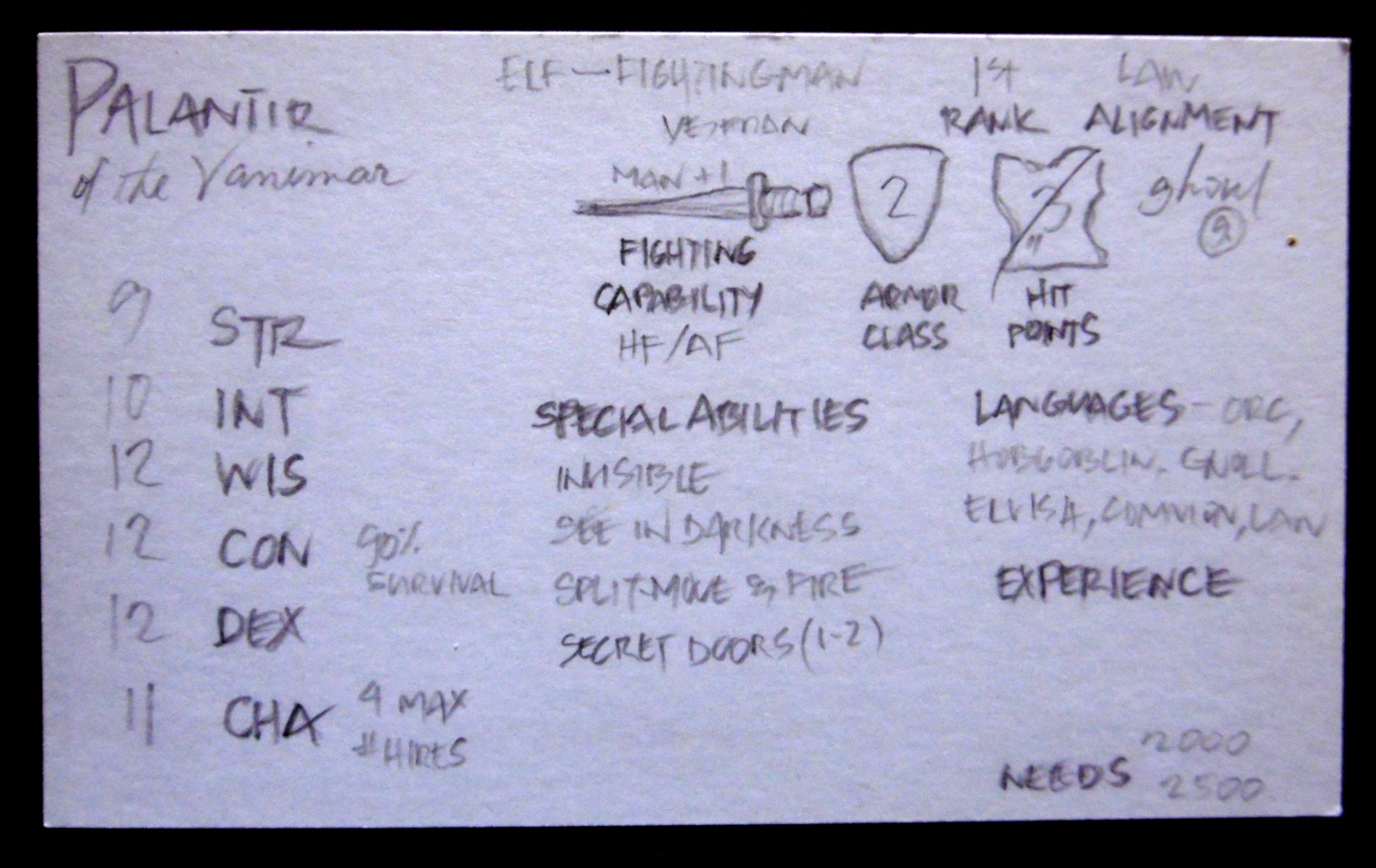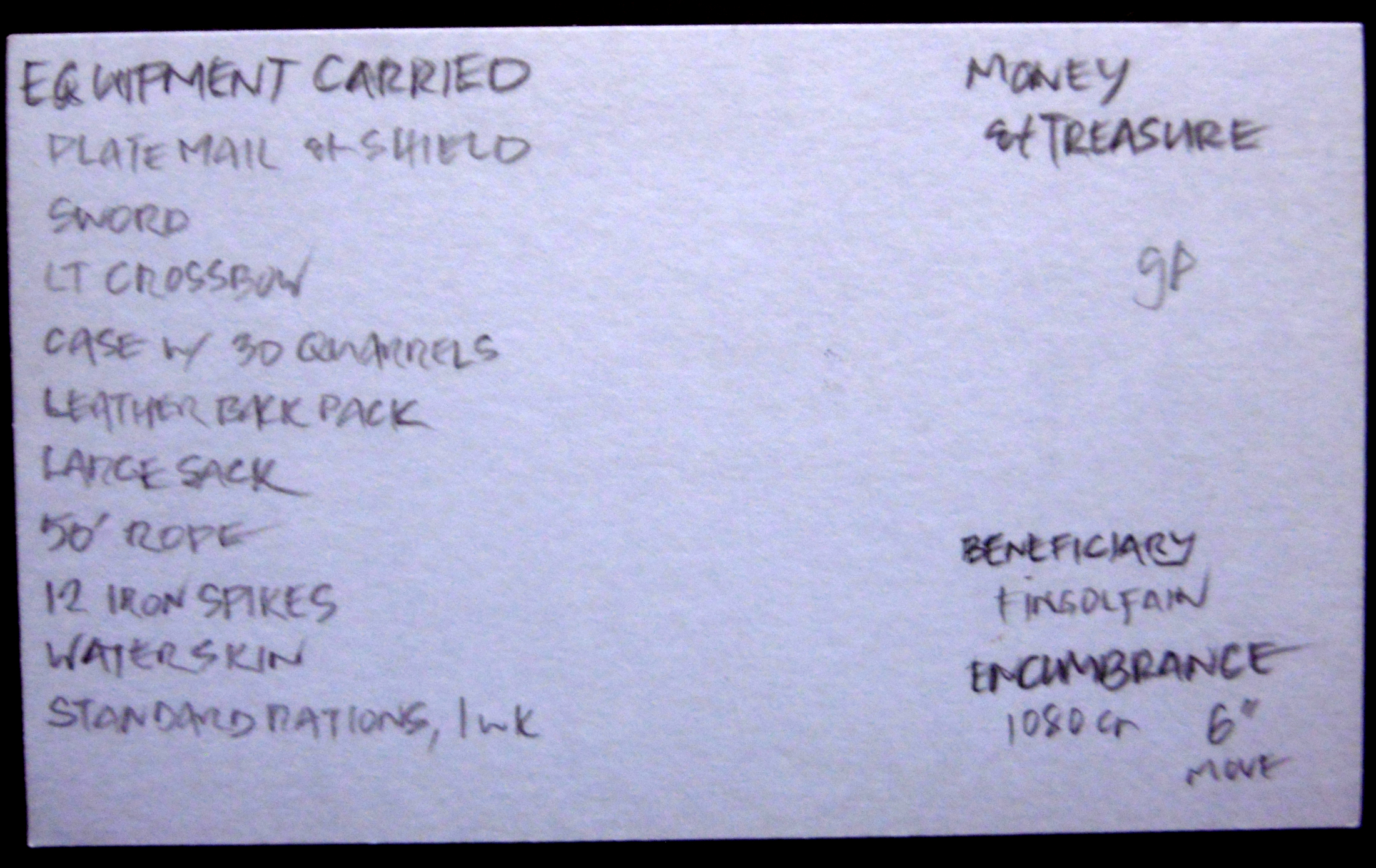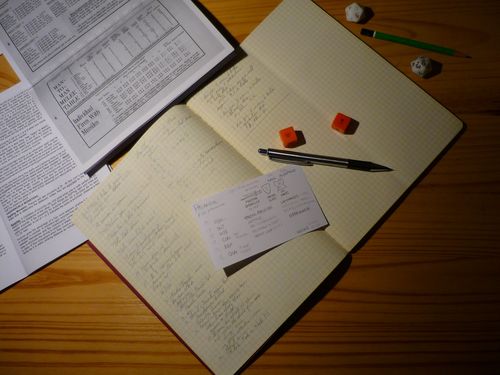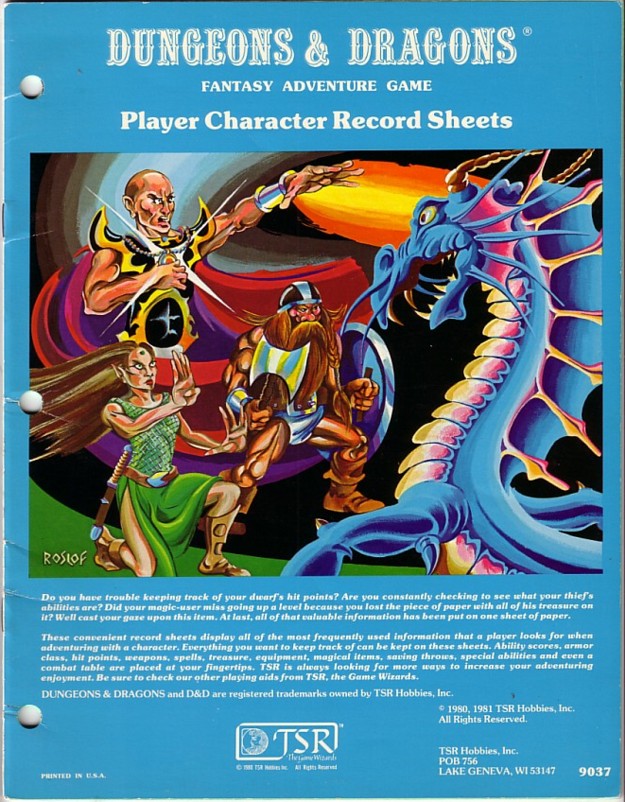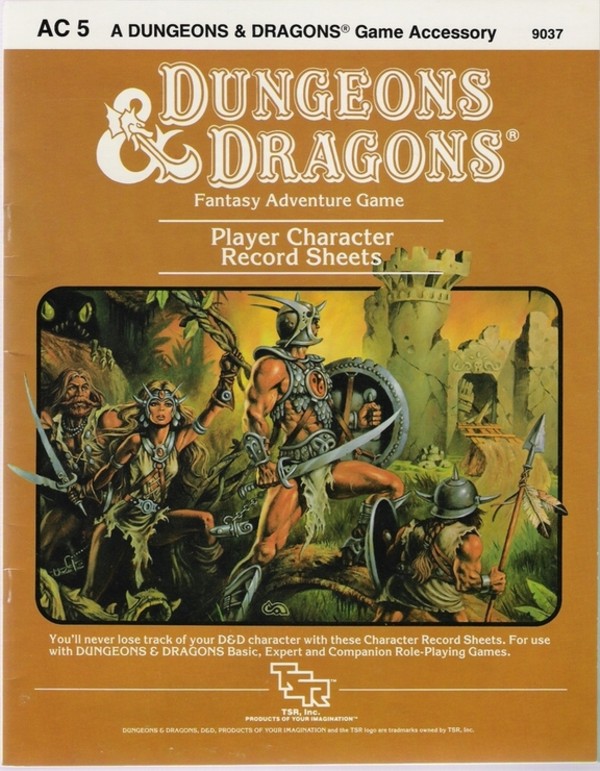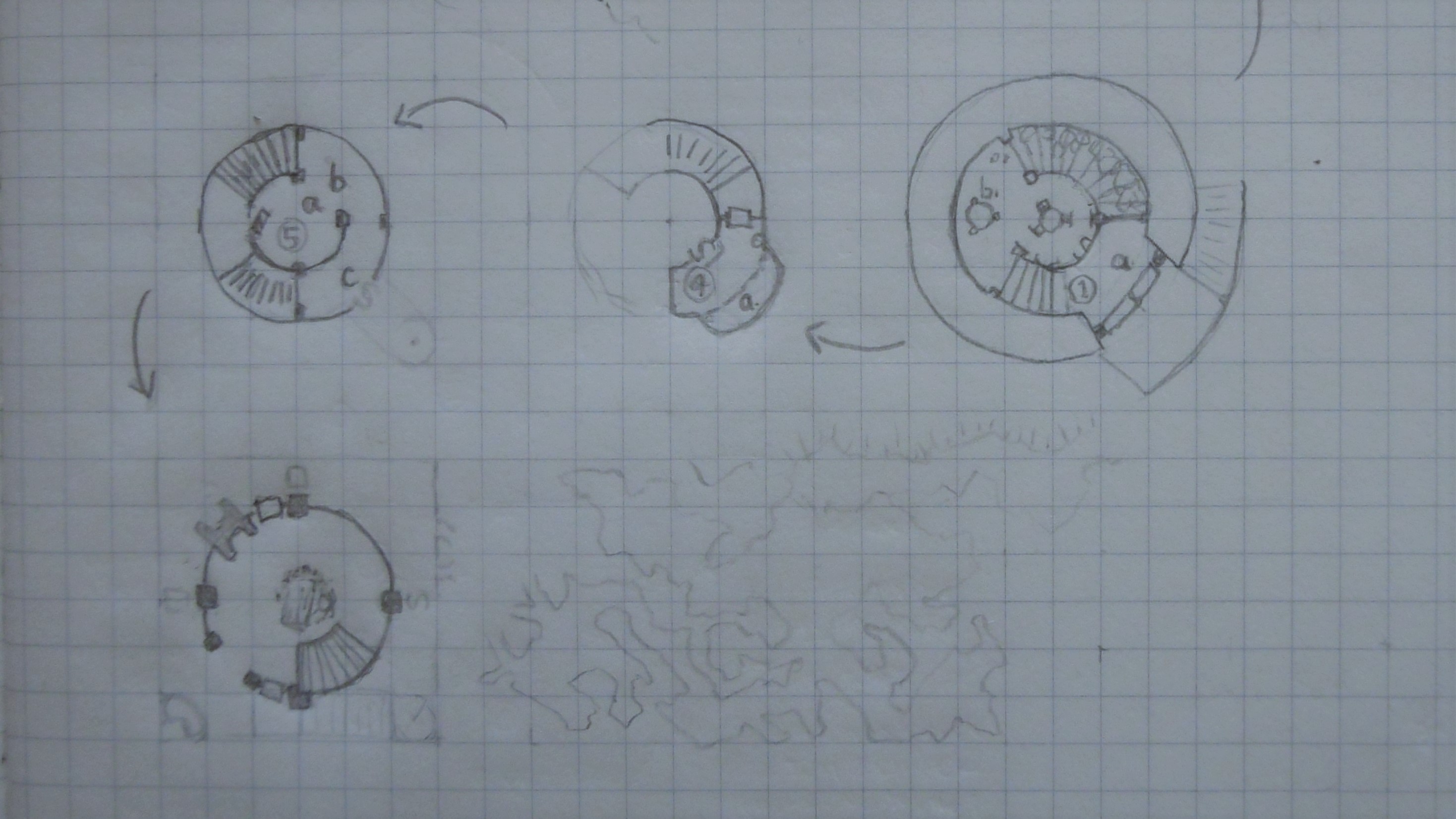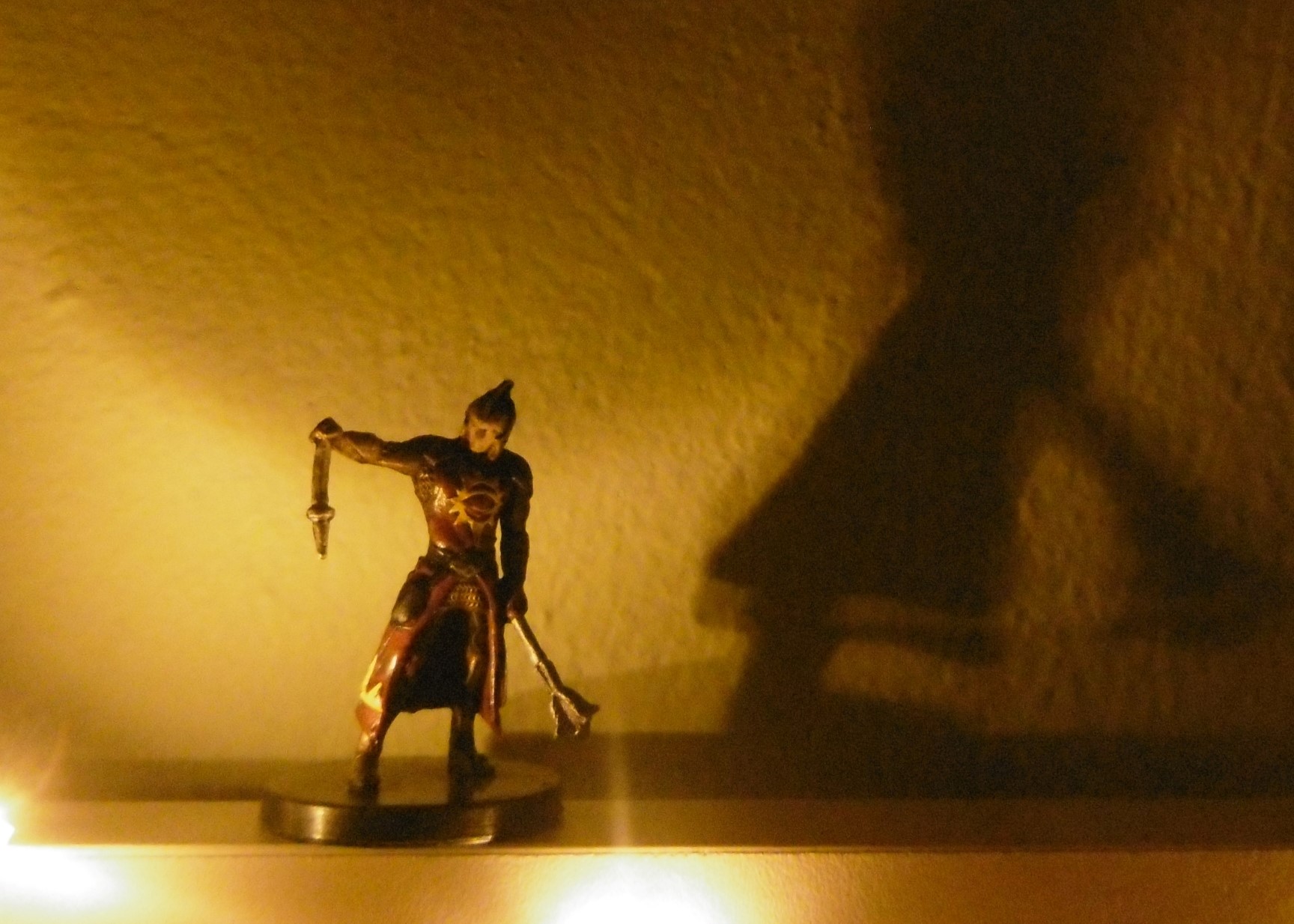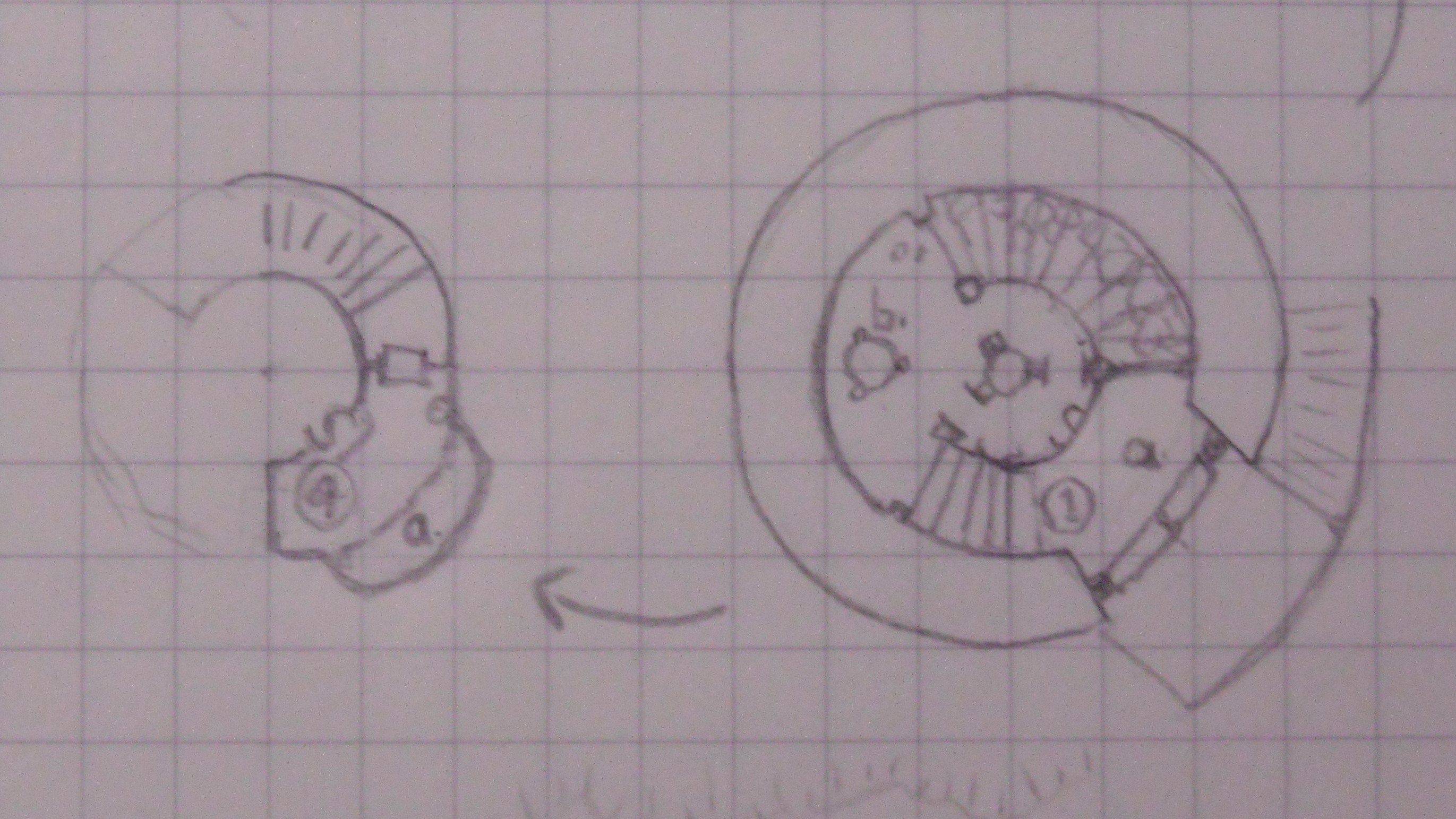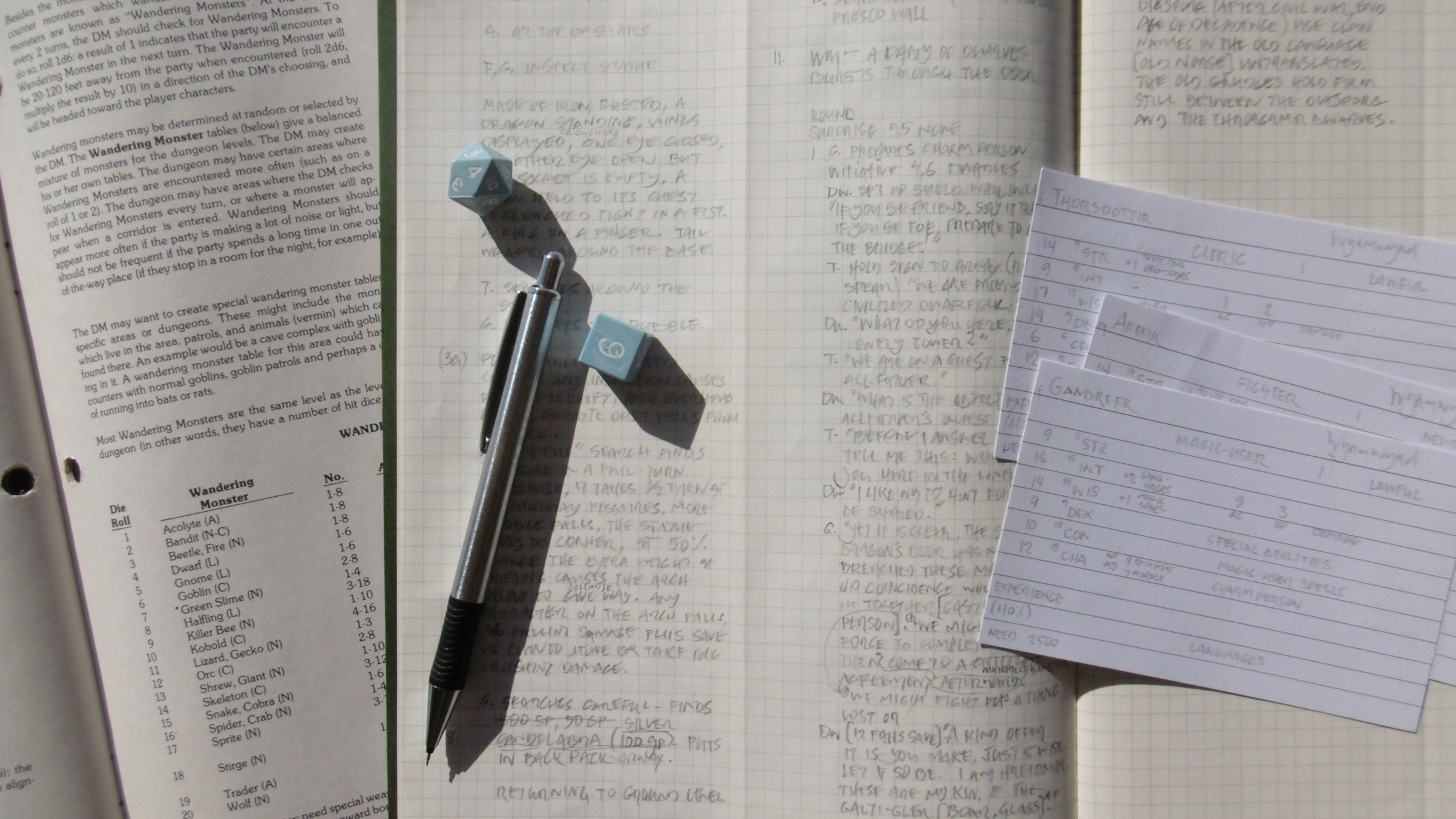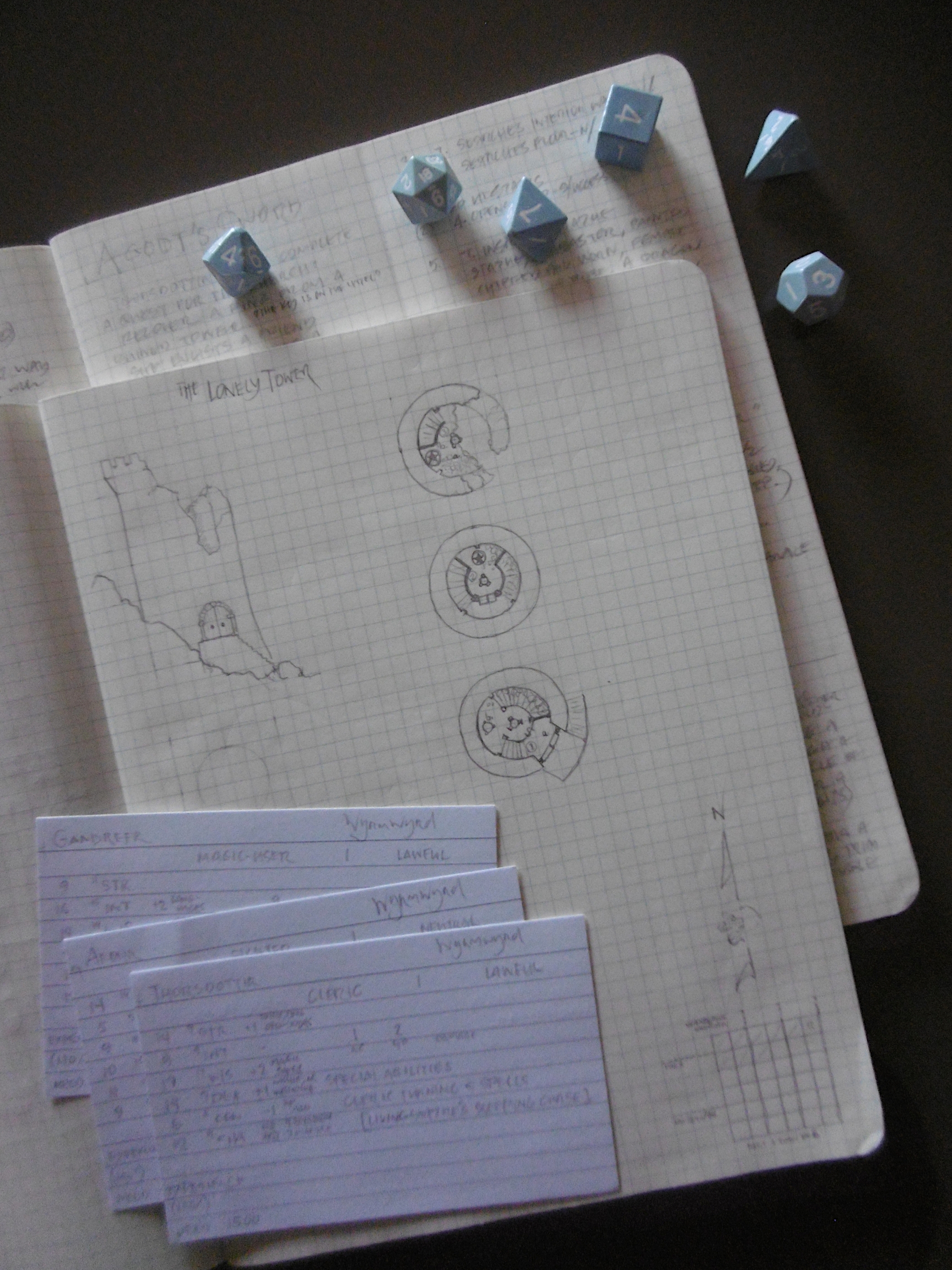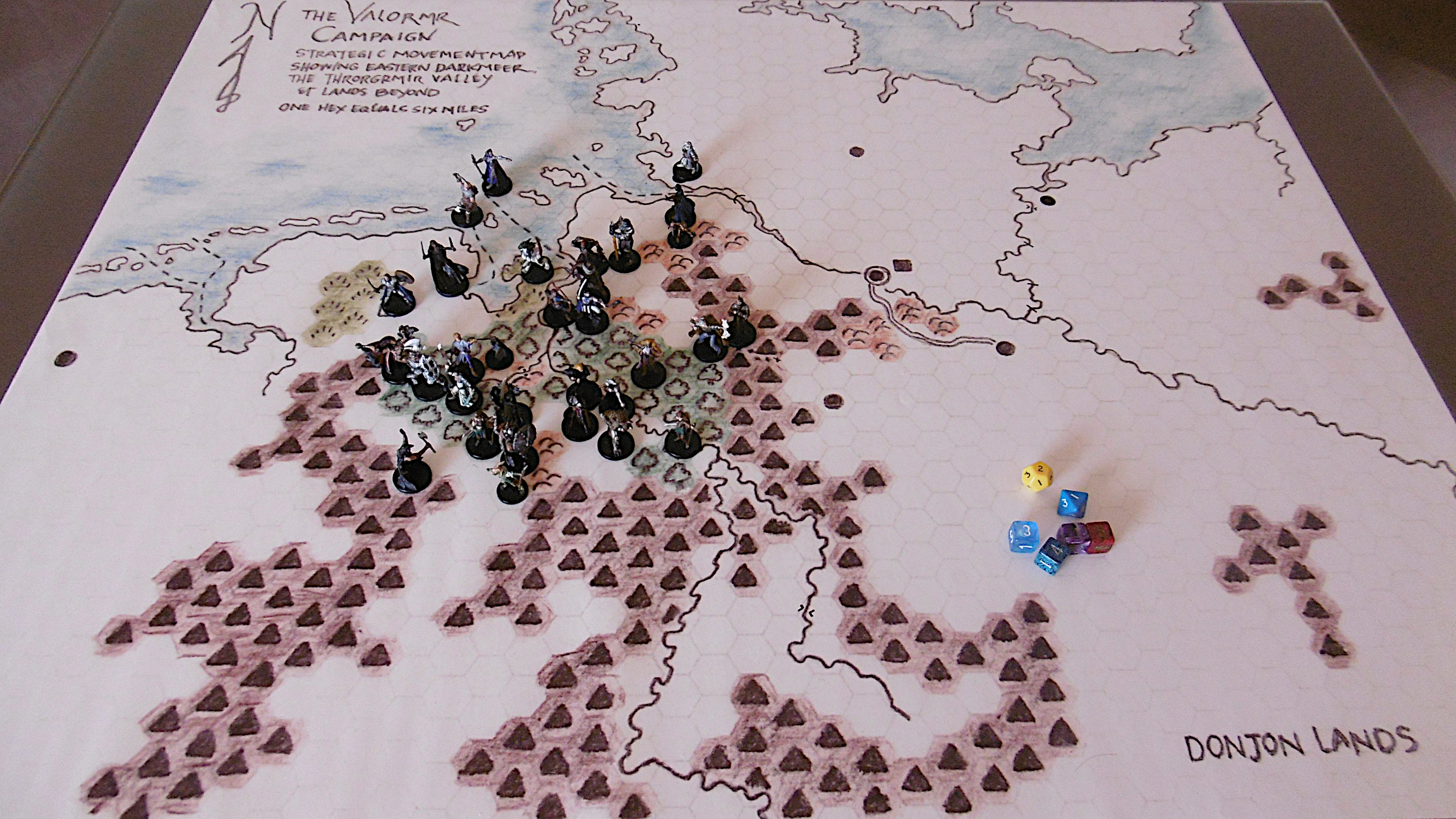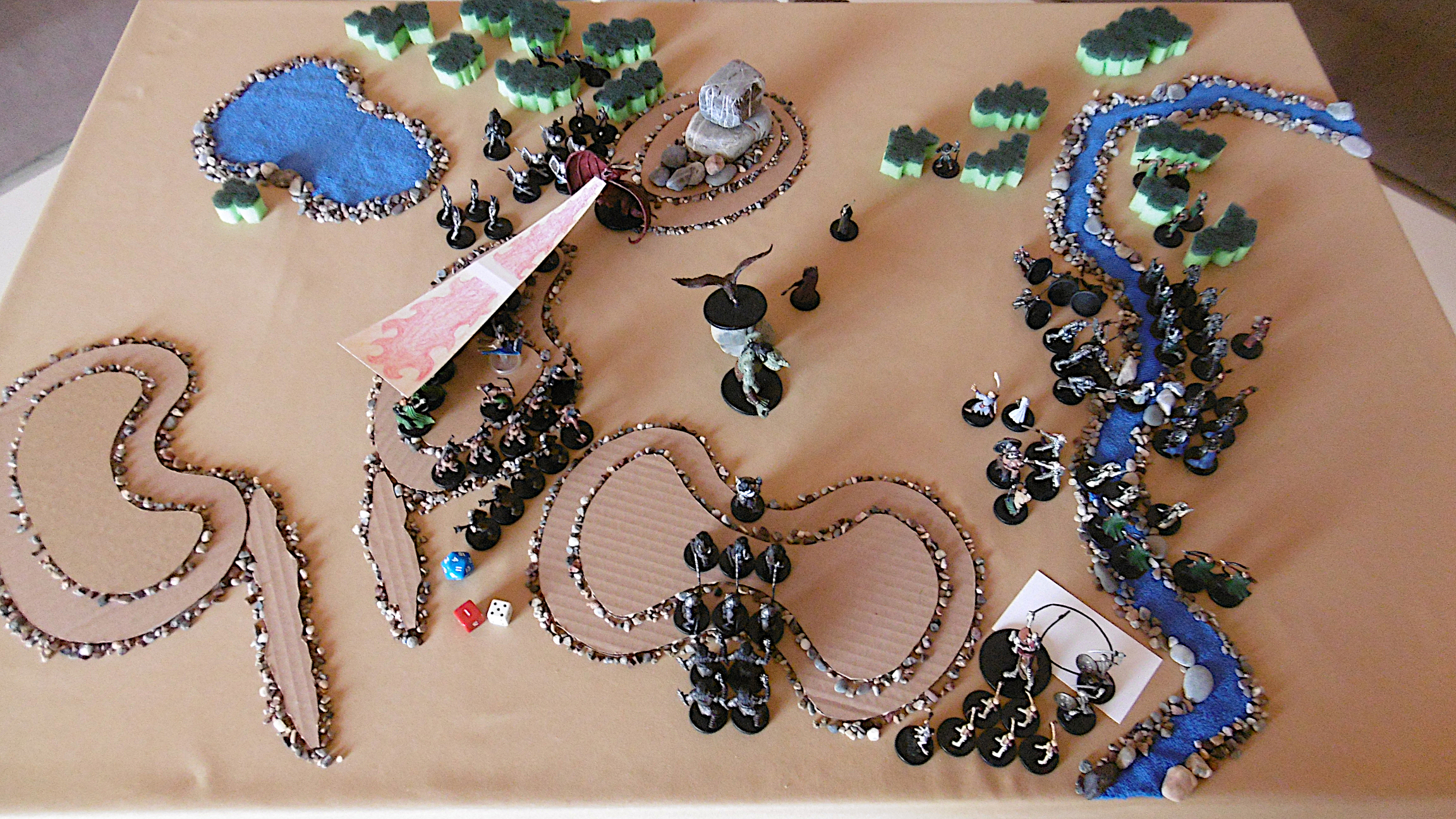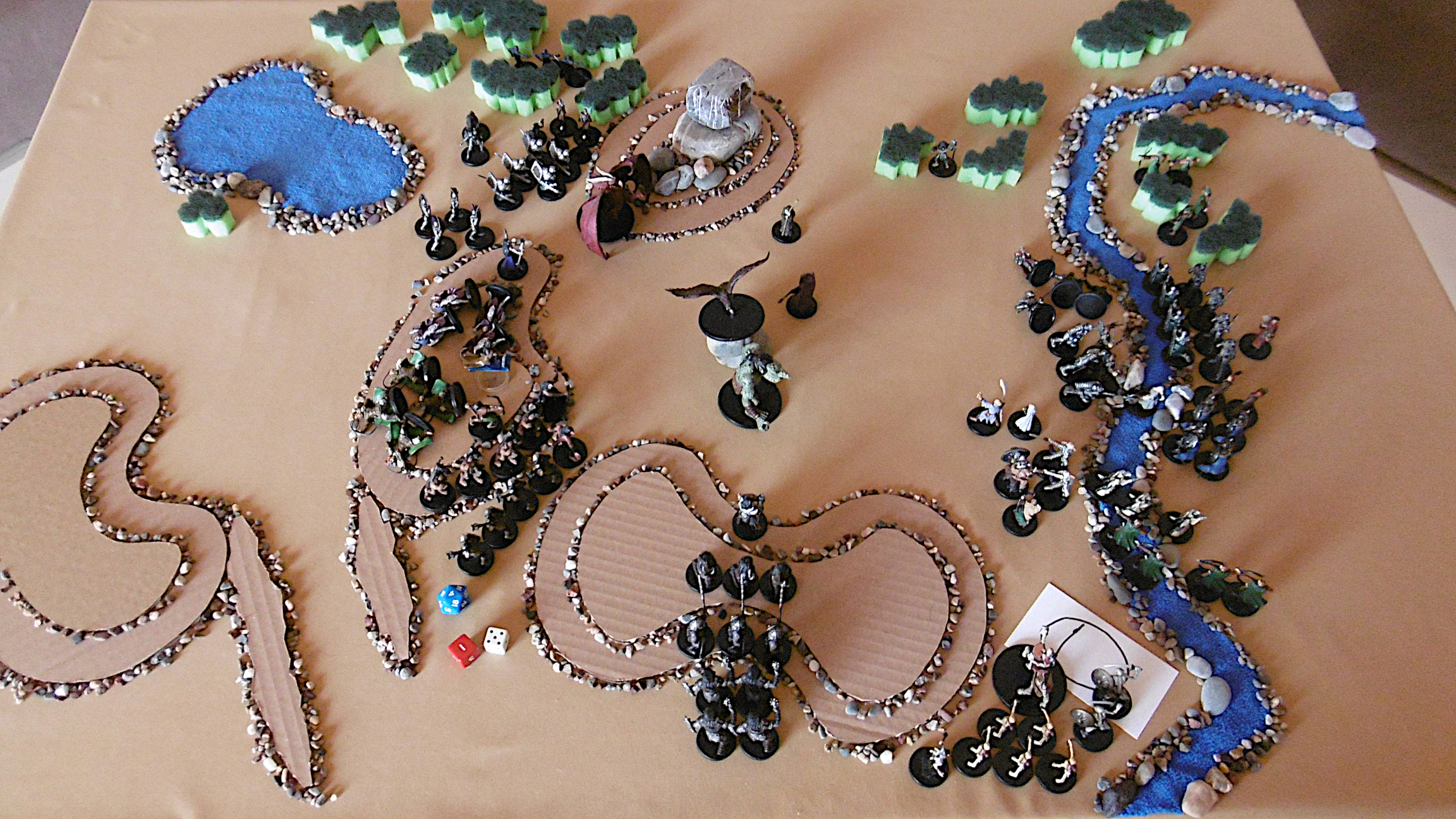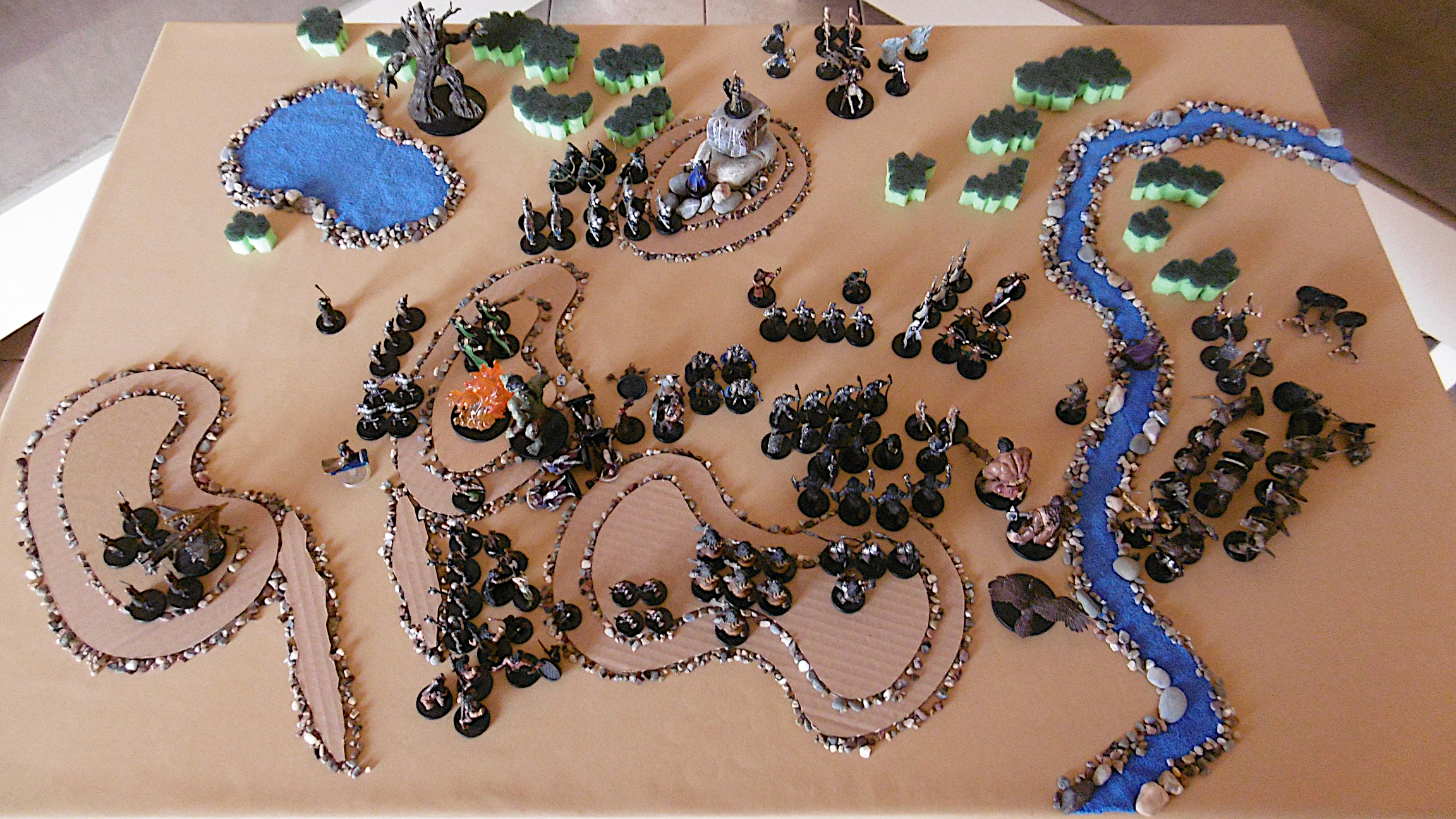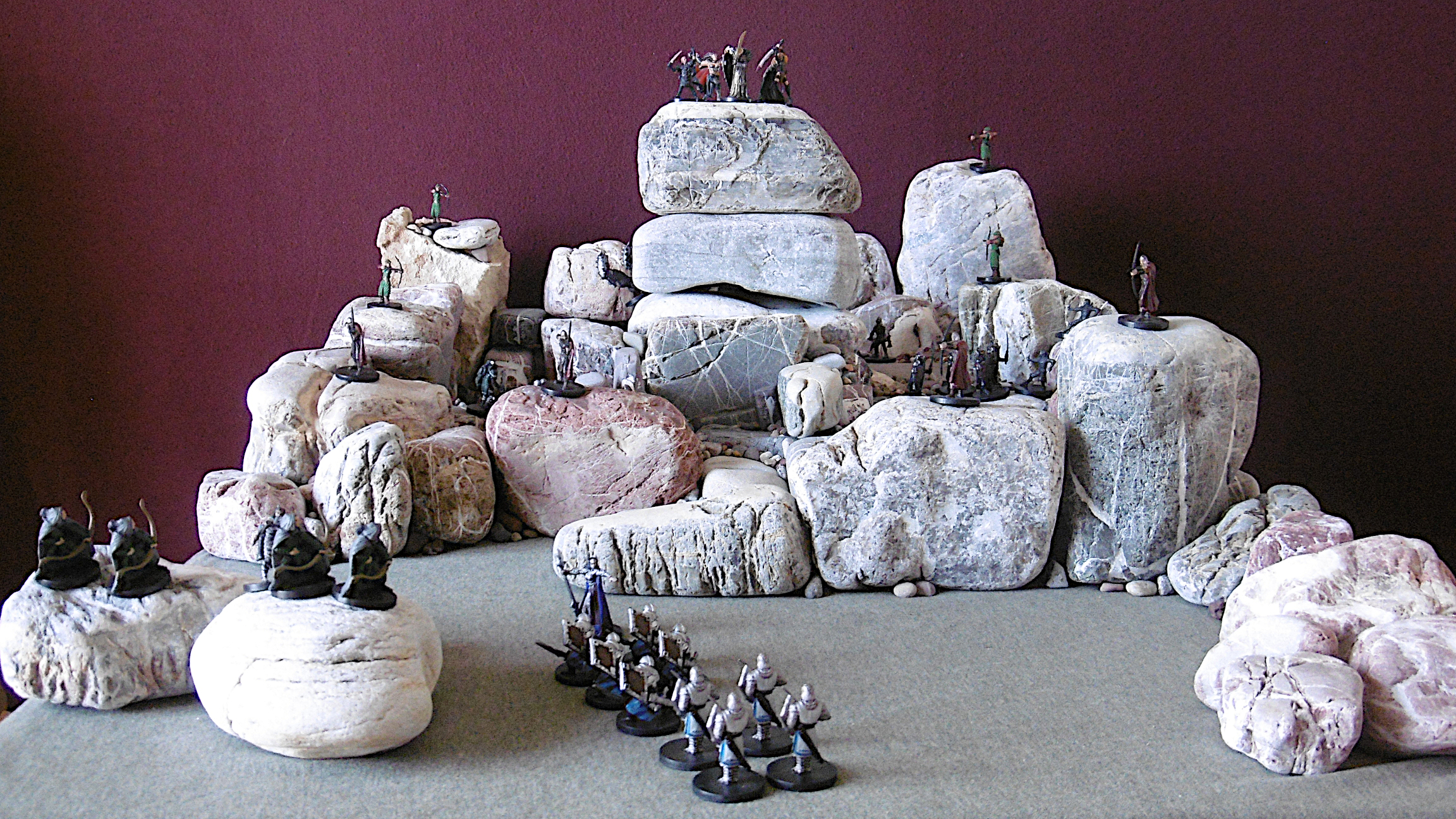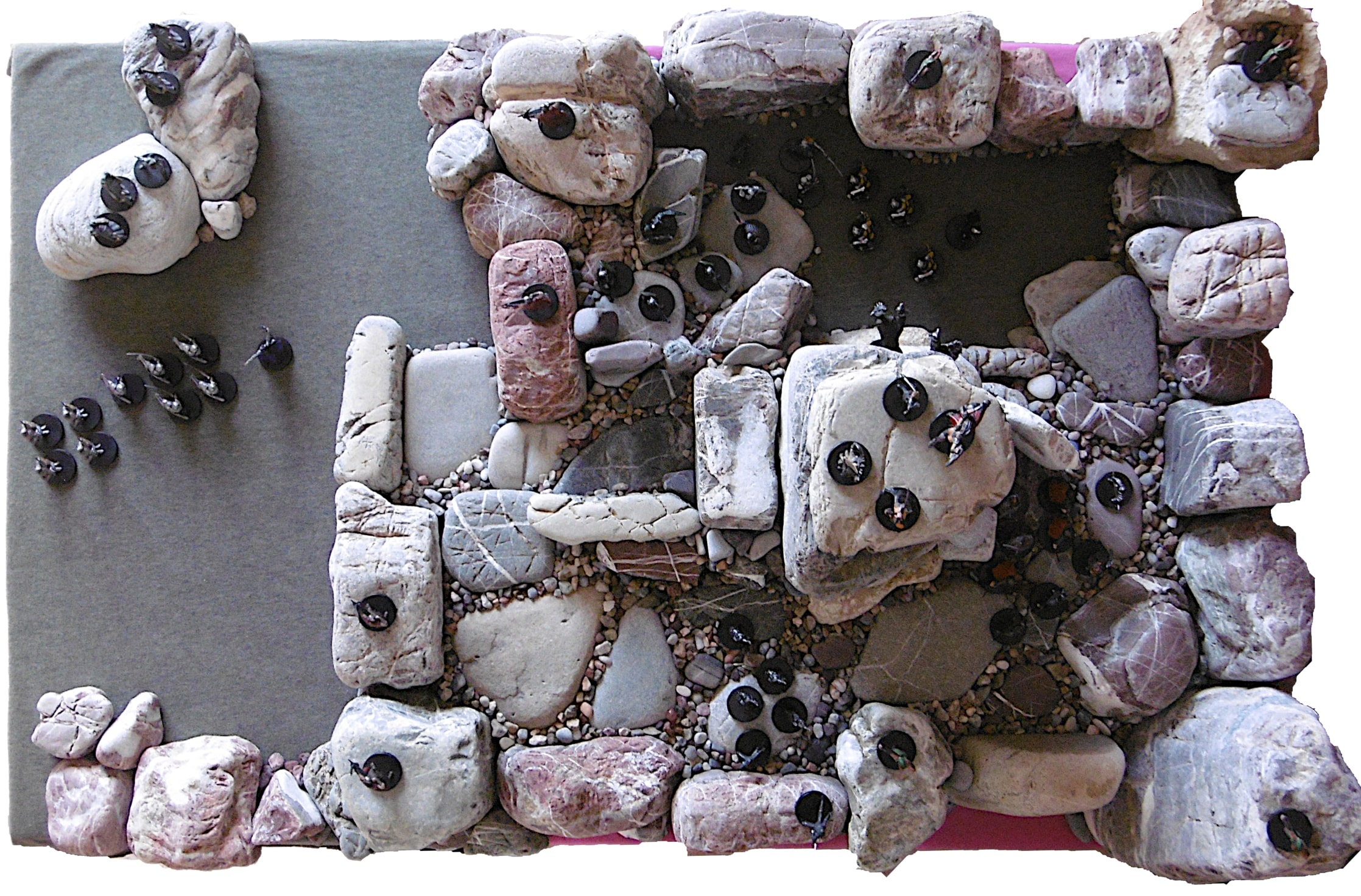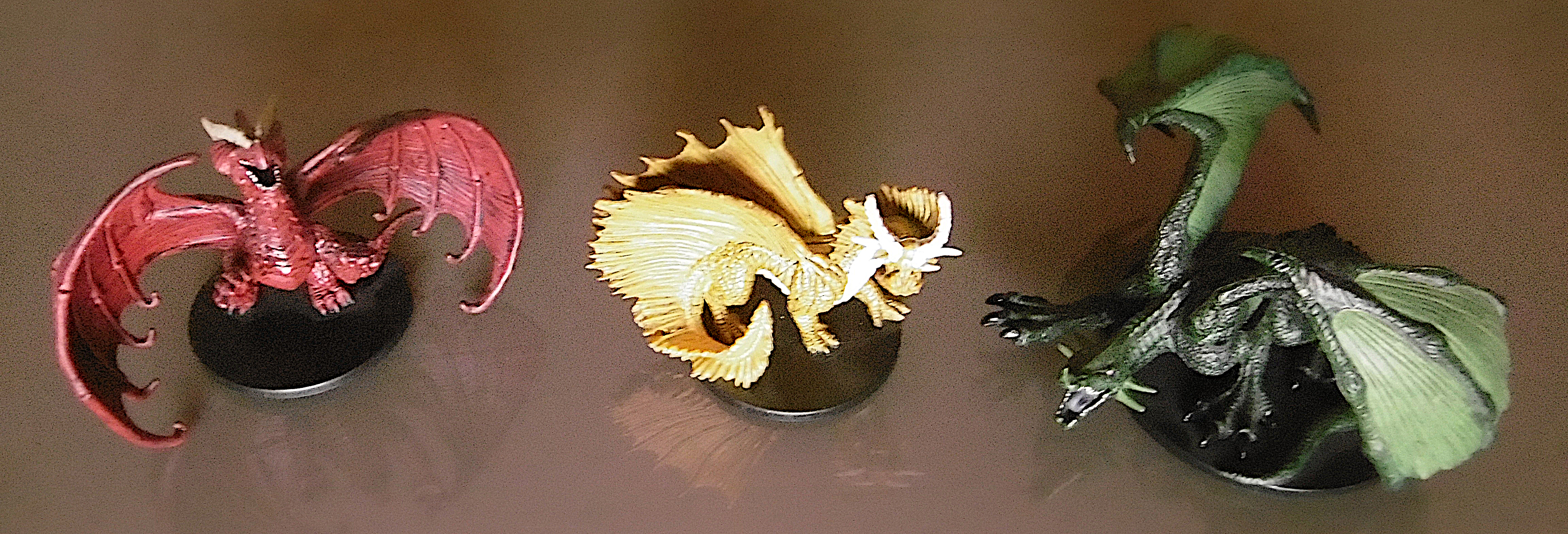Periphron’s Tower and Excavation: Adventure in the Making
The wizard Periphron seeks a powerful artifact called “the Seventh.” His research, which includes use of a crystal ball and multiple castings of contact other plane, aided by a library of esoteric tomes, indicates the Seventh is located within the ruins of an ancient town, purportedly buried under a rocky hill in an arid plain.
After charming the blue dragon that laired within, Periphron rebuilt a ruined tower on the hillside. Beneath the tower, he excavated several tunnels in search of the ancient town. Exploratory tunnels broke into a series of natural caverns, which leads to the ancient town’s underground ruins.
Periphron uses the charmed blue dragon to guard the tower entrance. The excavation is accomplished by move earth spells and stone giants. Periphron’s apprentices handle the excavation’s day-to-day management.
Meanwhile, the wizard continues research. For, with the Seventh, Periphron intends to begin the prophesied Age of Dragons. How he will achieve this is unknown, even to the wizard himself.
But lawful factions want to prevent Periphron’s finding the artifact. Chaotic factions want to steal it. After so many uses of contact other plane, Periphron might be fairly nuts.
Imagining a cover for Old-School ’77 Dungeon Stocking Tables, I hit upon the idea to draw a dungeon map with stocking notes, examples from the tables. One thing led to another…
Cover in the Making
To create the adventure locale, I string together a series of five-room dungeons. Among Neagley’s nine forms, a “Moose” makes the tower; a “Cross,” the exploratory tunnels; an “Evil Mule” for the cave network, and a “Paw” looks like the excavation site. For this purpose, I use the forms without necessarily incorporating Johnn Four’s five-room-dungeon story framework.
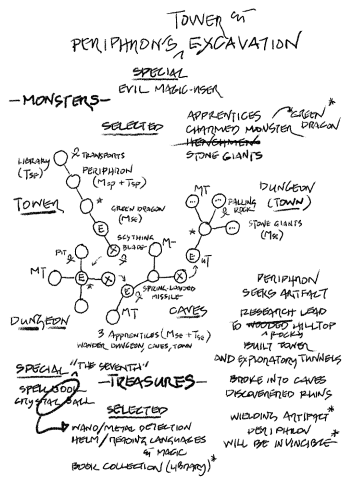
Symbol meanings are given in parenthetical notations within the text below.
On my draft, circles are rooms or encounter areas; lines are corridors, tunnels, and stairway connections between. I note the entrance (E) to each as well as its exit (X), which joins the next entrance. This makes a wire frame model. Later, while drawing the thing, other connections between rooms within and without each five-room section—much desired according to Jaquays’ Techniques—may become apparent.
See “Xandering the Dungeon” on the Alexandrian. In five parts and three addenda, Justin Alexander’s treatise exposes the techniques, philosophy, and multiple examples of the cartographic and dungeon design methods of Jennell Jaquays, whose early design credits include “F’Chelrak’s Tomb” (The Dungeoneer No. 1, 1976) and Judges Guild modules Caverns of Thracia (1979) and Dark Tower (1980). Alexander’s series is a must-read for fledgling cartographers and adventure-game designers. Jaquays’ work is a must-study.
Monsters and Treasures
As per guidelines in the 1977 supplements Monster and Treasure Assortments and Dungeon Geomorphs, I chose monsters and treasures according to the scenario in mind. “Specials” are the focus of the dungeon, in this case, the wizard and the object of his search. “Selecteds” are those monsters and treasures that round out the story. For example, apprentices and other monsters the wizard uses as tools—because he’s evil—and wealth and magic items they employ to achieve their goals.
Monsters
To accompany the wizard, I figure he must have apprentices, a charmed monster, and some manual laborers. Periphron is throwing high-level spells in the background story, and the sought artifact has world-changing potential. There happens to be a 13th-level wizard on M&T’s Level 9 monster list. In the same list, I find a blue dragon for the charmed-monster guardian and stone giants to do the heavy lifting.
Special: Periphron (13th-level wizard).
Selected: Apprentices (MU 10-ish), stone giants, blue dragon (charmed monster).
I note that stone giants are neutral in alignment. So, their relationship to the evil wizard is not a simple cooperation, and I’ve already used the charm monster spell. As the scenario develops, we might find an opportunity to embellish the story and explain why the giants do the wizard’s work.
Treasures
The object of Periphron’s search, the Seventh is the primordial wyrm’s last unhatched egg from the Wyrm Dawn campaign. Its discovery and successful use (far from obvious) might create competition for the pretender in Wyrm Dawn’s successor Wyrmwyrd.
See the Legends section of “Myths and Legends” for more on the story.
Special: the Seventh (artifact).
Selected: Periphron’s spellbook, crystal ball, wand of metal detection, helm of read languages and magic, reference books.
In the selected treasure list, I have neglected wealth, which we might think would be necessary to accomplish Periphron’s plans. We’ll be generous with treasure-rolling opportunities in stocking—unless the wizard spent all his money and, so, is now desperate to find the artifact…
Placement and Distribution
I place the special monster (Msp) and treasure (Tsp): Periphron in the tower, the Seventh in the excavation site—yet undiscovered. For contents of other rooms, I roll on one of the tables from the Old-School ’77 Dungeon Stocking Tables. The principle difference between the three tables is the chance for a monster encounter as noted below.
| Dungeon Section | Old-School ’77 Table | Chance for Monsters |
|---|---|---|
| Tower | By the Bluebook | 33% |
| Exploratory tunnels | Basic and Lower Dungeons | 25% |
| Caves | Caves and Caverns | 50% |
| Excavation site | Basic and Lower Dungeons | 25% |
The results are noted on the wire-frame model: selected monsters and treasures (Mse, Tse), other monsters with treasures (MT), monsters without treasure (M—), unguarded treasures (uT), traps (an “X” with a half circle above—my rendition of a skull and crossbones), and interesting variations (star). I also note, with an asterisk (*), a few elements from which I might later derive adventure hooks.
In B/X, Moldvay separates OD&D’s “tricks and traps” into traps and “specials” for “anything not exactly a trap, but placed for special reasons” (B52). Meanwhile, in Holmes’s 1977 Basic D&D, the editor refers to these as “interesting variations.”
Now to draw the map and fill in details. I will of course share the finished adventure module.
In the meantime, with this draft document, you might develop your own version of “Periphron’s Tower and Excavation.” All the elements, the artifact for instance, are interchangeable. Should the cartography be an obstacle, you might browse Dyson Logos’s collection of five-room dungeons (tagged 5RD) or search the network for suitable maps to string together.
This 68-day #Dungeon23 veteran is confident that he can draw a 20-room map.
Justin Alexander changed the verb for using Jaquays’ techniques. See his “Historical Note.” Now we “Xander” the dungeon. I changed references and links accordingly. [13:43 27 November 2023 GMT]
I am an irregular tweeter, but follow me on Mastodon @stephenwendell@chirp.enworld.org for daily #Dungeon23 contributions.
